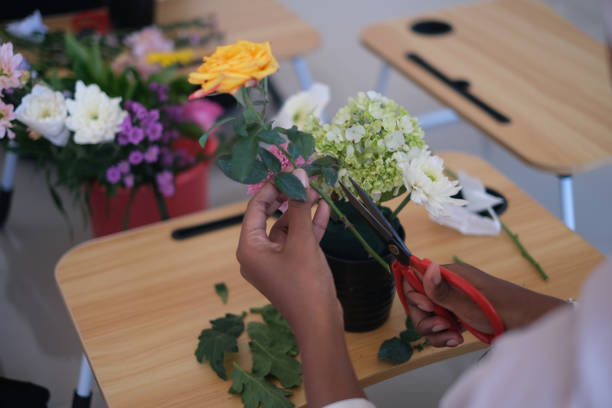Indoor gardening has become a fun and popular hobby, especially for people who are just starting out. As cities grow and outdoor spaces get smaller, many people are turning to indoor gardening to stay connected with nature.
It’s a flexible and easy way for anyone to grow plants, even if they have little space or experience. Indoor gardening has many benefits, like improving air quality and making people feel happier, which is why so many beginners are interested in it.

Why Indoor Gardening is Great for Beginners:
Low maintenance: Plants like succulents, snake plants, and pothos are great for beginners because they don’t need much water or attention.
Builds Confidence: Growing easy plants helps beginners feel successful, giving them the confidence to try more advanced gardening.
Improves air quality: Plants such as spider plants and peace lilies help clean indoor air, which makes your home a healthier place to live.
Adaptable to small spaces: These plants don’t need a lot of room, so they can grow well on windowsills, shelves, or even small tables.
Cost-Effective: Starting with budget-friendly, hardy plants lets beginners learn without spending a lot of money, making it less risky.
Why Start Indoor Gardening?
Indoor gardening has many advantages that make it perfect for beginners:
Convenience
You can garden indoors all year long, even when it’s cold or rainy outside. You can grow plants inside, even if you live in an apartment or don’t have a backyard.
Stress relief
Taking care of plants can reduce stress and help you feel happier and calmer. Gardening helps you focus on the present and take a break from the busy world.

Health Benefits
Many indoor plants naturally remove toxins from the air and increase oxygen, making your home healthier. Plants release moisture into the air, which can help with dry skin and breathing.
Top 5 Beginner-Friendly Indoor Plants
Snake Plant (Sansevieria)
This plant has tall, sturdy leaves with green and yellow stripes. It’s tough and survives in low light with little water, making it great for beginners. It cleans the air by removing harmful chemicals like formaldehyde.
Pothos (Epipremnum aureum)
A fast-growing vine with heart-shaped leaves in shades of green, yellow, and white. Pothos grows in low to bright light and only needs water when the soil is dry. It’s flexible and can adapt to almost any indoor environment.
Spider Plant (Chlorophytum comosum)
This plant has long, arching green leaves with white stripes and produces baby plants. Spider plants need moderate watering and do well in bright, indirect light but can handle lower light too. They’re excellent at cleaning the air and removing substances like carbon monoxide.
Basil (Ocimum basilicum)
A popular herb with fragrant green leaves, often grown in the kitchen. Basil loves bright sunlight and needs regular watering. It’s not only tasty for cooking but also repels insects naturally.
Aloe Vera
Aloe vera has thick, fleshy leaves filled with gel, known for its healing properties. It thrives with little water and bright, indirect sunlight. The gel inside its leaves can treat small burns and cuts.
Fun Indoor Gardening Activities for Beginners
Planting herbs on windowsills
Grow herbs like basil, mint, and thyme in small pots on a sunny windowsill. You get fresh herbs for cooking, and it’s rewarding to watch them grow.
Creating a mini terrarium
Design a tiny garden in a glass container with small succulents and decorative stones. Terrariums are beautiful, low-maintenance, and creative.
Starting a Hanging Plant Display
Hang trailing plants like pothos or ivy in pots from your ceiling or shelves. It’s a great way to add greenery without taking up floor space.

Common Mistakes Beginners Should Avoid
Overwatering: Too much water can cause root rot. Always check if the top inch of soil is dry before watering.
Poor lighting selection: Some plants need bright light, while others prefer low light. Make sure to match your plant with the right lighting conditions.
Using the Wrong Soil: Not all plants use the same soil. Use potting mix for indoor plants, and choose the right type for your specific plant (like cactus mix for succulents).
Caring for Your Indoor Plants
Watering Schedules
Different plants need different amounts of water. A good rule is to water your plant when the top inch of soil feels dry. Succulents and cacti don’t need much water and usually only need watering every 2–3 weeks.
Giving your plants too much water can cause root rot. Make sure your pots have holes at the bottom to let extra water drain out.
Light Exposure
Know what kind of light your plants need. Succulents, herbs, and cacti love bright, direct sunlight, while plants like snake plants and pothos can do well in low light or indirect sunlight.
If the leaves turn yellow, your plant might be getting too much light. If it’s growing slowly or stretching, it needs more light.

Humidity Control
Some plants, especially tropical ones like ferns and peace lilies, grow better with higher humidity. Dry air indoors, especially in winter, can make it harder for these plants.
You can mist your plants with water, group them together, or place a tray with water and pebbles under their pots to boost humidity.
By following these simple care tips—watering correctly, providing the right light, and keeping humidity levels up—your indoor plants will stay healthy and grow well.
Indoor Gardening Kits for Beginners
Here are some of the best indoor gardening kits for beginners:
Arrow Garden Harvest
This kit comes with a hydroponic system, built-in LED growth lights, and pods with herbs like basil, parsley, and thyme seeds. It’s very easy to use.
The system reminds you when to water and turn on the lights, so it’s perfect for someone new to gardening.
Click & Grow Smart Garden
It has a self-watering planter, LED grow lights, and pods with seeds for plants like basil, cilantro, and mini tomatoes.
This kit requires very little work because it waters the plants for you and provides just the right amount of light. This is great if you don’t have a lot of time.
Plant Theater Funky Wedge Cut
This kit comes with everything you need to grow colorful vegetables like purple carrots and yellow zucchini, pots, soil discs, and plant markers.

It’s a fun way to start growing vegetables indoors, and it comes with easy instructions.
Urban Leaf Herb Garden Starter Kit
The kit comes with biodegradable pots, clay discs, seeds for herbs like cilantro, parsley, and basil, and a guide to help you.
It’s made for small spaces, and the guide gives you step-by-step help so you can easily grow your own herbs.
Nature’s Blossom Indoor Bonsai Tree Kit
Contains seeds, pots, soil, and a guide to help you grow and care for miniature bonsai trees. It’s perfect for someone who wants a more artistic approach to gardening, and the guide makes it easy to get started growing bonsai trees.
These kits make indoor gardening easy and fun, providing you with everything you need to grow herbs, vegetables, or even bonsai trees at home!
Final Thoughts
Starting an indoor garden is easy and rewarding. Even with a small space, you can enjoy the benefits of indoor gardening, like cleaner air and a more peaceful environment. By choosing easy-care plants like succulents and snake plants, you can create a beautiful and thriving indoor garden with little effort.
How often should I water my indoor plants?
Water when the top inch of soil is dry. Be careful not to overwater, especially for succulents.
What’s the best lighting for indoor plants?
Most indoor plants do well in bright, indirect light. Some, like snake plants, can handle low light.
Do I need special soil for indoor plants?
Yes, use a well-draining potting mix for indoor plants. Succulents need a special cactus mix.
How do I know if my plant is getting too much or too little light?
If the leaves turn yellow or burn, it’s getting too much light. If it’s leaning toward the light or growing slowly, it needs more light.
Do I need to fertilize my indoor plants?
Fertilize once every 4-6 weeks during spring and summer with a balanced fertilizer, but don’t overdo it!
